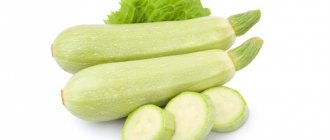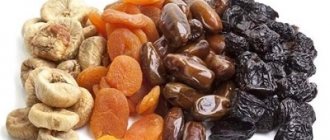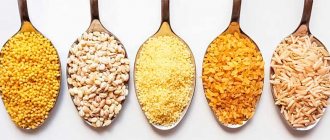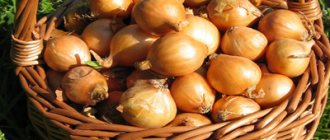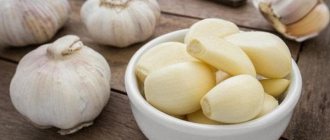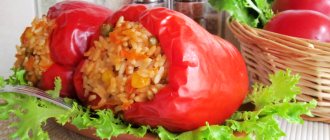Everyone knows that most vegetables and herbs contain a lot of useful substances and vitamins, celery is no exception. Celery can be eaten either cooked or raw; it has an unusual sour taste that complements many dishes well. It is used as an ingredient in salads or added to various dishes (stews, soups, etc.) to add a special flavor. It is a very useful food product that helps improve digestion, has a beneficial effect on the functioning of the nervous system and keeps the human heart in good shape.
Celery is prohibited for gastritis with high acidity.
Doctors speak well of celery. It contains many useful elements and has healing properties, allowing you to keep the body in good shape and strengthen the immune system. In folk medicine it is used as a rejuvenating agent and it is believed that its use will give you youth not only in appearance, but also prolong life for many years.
Popular and flavorful
This is, of course, dill.
The plant has been used as food for over 5,000 years, and in ancient Italy it was considered an excellent bouquet for a beloved lady. The medicinal properties of dill were known and used by ancient Egyptian doctors; the plant is mentioned in the works of Avicenna, who advised not to overuse dill as a medicine. This is due to the antihypertensive properties of the plant - it can significantly reduce blood pressure. Our mothers and grandmothers used dill when caring for babies. Dill water saved babies from stomach cramps and relieved flatulence. For gastritis, this property of dill water is also widely used - for discomfort and unpleasant sensations in the stomach, for frequent pain, just brew dill seeds - and the unpleasant sensations will disappear.
https://www.youtube.com/watch?v=CZwdkGD5WW4
Pour a teaspoon of dry dill seeds into a glass of boiling water and place in a thermos overnight. In the morning, strain the infusion - the medicine is ready. For abdominal pain and flatulence, take a quarter glass of dill water 2 to 3 times a day until the painful symptoms disappear. The product is effective, affordable, and, most importantly, natural.
Useful composition
Dill is very useful for vitamin deficiency and health problems. The plant contains:
- carotene (vitamin A), vitamin C, flavonoids with antioxidant and
- immunostimulating properties;
- folic acid – necessary for normal metabolism and hematopoiesis;
- calcium is the main element for strengthening bones and joints;
- potassium is an electrolyte necessary for the normal functioning of the heart and blood vessels;
- essential oils – have a stimulating and stimulating effect, imparting aroma to the plant.
Dill is an indispensable stomach aid for gastritis. By enhancing secretion, dill helps break down dietary fiber. If you “sinned” and ate something fatty, don’t forget to add dill to the menu; fatty foods will be digested faster. At the same time, dill will remove bloating, constipation and pain.
Treatment with dill - useful tips
As you know, inflammation of the gastric mucosa often develops into ulcers and other diseases. Dill becomes a serious obstacle to complications. In the form of a decoction, it can replace many medications and even relieve pain. Even in the form of a seasoning, the plant is very useful. It helps with constipation and colic.
So, there are several traditional medicine recipes using dill in the treatment of gastrointestinal diseases. We will share with you the most effective:
- To improve the functioning of all gastrointestinal organs, we recommend preparing medicinal tea. To do this, pour 200 ml of boiling water over a tablespoon of seeds and leave for 5 minutes. Drinks like regular tea. Of course, the taste and smell of “dill” tea is very specific. You'll have to be patient - which you can't do for the sake of your health.
- Dill for gastritis with high acidity has proven to be highly effective. However, it can also help with colic. To do this, pour two teaspoons of chopped dill into 0.5 liters of boiling water and leave for 30 minutes. Treatment regimen – 1/3 glass three times a day before meals.
Is it allowed for gastritis?
Celery should not be consumed by those who have high acidity in the stomach. The roots and stem of this vegetable contain essential oils that activate the secretion of digestive juice. In addition, celery contains a sufficient amount of coarse fiber, which is a strong irritant to an already inflamed stomach.
For gastritis with low acidity, it is allowed to eat celery after warm processing. You can puree the processed vegetable with the addition of olive oil. You are also allowed to drink the decoction. To prepare it, you need to chop the root and pour 450-500 ml of boiling water. Bring everything to a boil and simmer for about 5 minutes.
Freshly squeezed celery juice is contraindicated for any form of gastritis.
For gastritis, it is best to steam, bake or stew celery with other permitted vegetables.
However, gastroenterologists advise using this vegetable carefully for all gastrointestinal diseases, so before adding it to your diet, it is better to consult a doctor.
Is it possible to eat a vegetable if you are sick and how to eat it?
If acidity is increased
For this form of the disease, it is especially important to spare the mucous membrane and inhibit the secretion of gastric juice. Products that stimulate the secretory function of the stomach and are rich in plant fiber are excluded from the diet. Celery is contraindicated in any form.
If acidity is low
Be sure to consult a gastroenterologist . Celery can be eaten in pureed form, after heat treatment. But caution must be exercised. You can add a small amount of spice to dishes (not raw!) for a single meal.
Those suffering from gastritis do not tolerate fresh juice or raw vegetables, even pureed ones, and react sharply to small errors in the diet. Therefore, consumption in large quantities will lead to an exacerbation of the inflammatory process.
Taking celery raw is contraindicated.
Parsley - mineral champion
Much is known about the healing properties of parsley: in historical literature the plant is mentioned as a commodity equivalent to gold. It is difficult to imagine a Slavic table without parsley; it has been used for a long time and everywhere. Just 50 grams of fresh parsley per day completely covers a person’s daily need for minerals.
Valuable Components
Parsley leaves and roots contain the following substances:
- Vitamins A and C, folic acid in large quantities;
- B vitamins necessary for the normal functioning of the central nervous system;
- Potassium, sodium, magnesium, zinc. Sodium is necessary for normal water-alkaline balance, magnesium is necessary for brain function and intelligence. Zinc is a real “male” element that preserves youth.
For gastritis of any form, parsley is not only not contraindicated, but is also actively recommended by nutritionists. Add the roots of the plant when cooking broth - they will help transform ordinary soup into a healthy and mineral-rich product.
Chopped herbs perfectly complement meat and fish dishes; your steamed cutlets, seasoned with parsley, will take on a completely different look and unique aroma.
Parsley stimulates the appetite and stimulates the functioning of the stomach and intestines. With regular use of parsley for gastritis, heaviness in the epigastrium, pain and even diarrhea disappear. Parsley promotes bile production, cleanses the liver, and enhances intestinal motility. Parsley is indicated for any form of gastritis, including erosive and atrophic. The spice can be consumed fresh, crushed, as well as frozen and dried.
For gastritis, mint is used as an analgesic and anti-inflammatory agent that eliminates nausea and vomiting and improves stomach function. Is it possible to use onions for gastritis, patients ask. It is prohibited due to the fact that it sharply increases acidity in the gastrointestinal tract.
It is recommended to use celery with great caution for gastritis due to the fact that it can increase the symptoms of the disease if consumed raw.
Some plants, vegetables and fruits can only be used when the secretion of gastric juice is reduced, while others can be used when this indicator is increased. What and when to use for the patient will be discussed below.
For gastritis with high acidity, mint is used in the form of decoctions taken internally. To do this, take dried mint leaves, grind them to a powder, and then pour boiling water over them.
Such decoctions help eliminate antispasmodic pain in the abdomen, relieve nausea, and prevent vomiting. Peppermint or field mint are best suited for creating a decoction or infusion. But not all patients can use this plant to help the stomach, since mint has contraindications:
- the plant should not be used by people with low blood pressure;
- mint infusion is not recommended for people who cannot tolerate this plant or are highly sensitive to the components of the medicine.
A decoction of mint leaves increases the risk of exacerbation of varicose veins if the patient has symptoms of this disease.
People know that onions should not be eaten if you have diseases of the stomach or intestinal tract. But not everyone understands that this product cannot be used at all during gastritis. Some patients try to boil onions and then treat gastritis by eating boiled farts.
But this causes increased acidity in the esophagus and irritation of the mucous membranes of the organ, so doctors strictly prohibit the consumption of boiled onions (green or onions). This product can be added in small quantities to salads or soups, but only after consulting your doctor.
Celery contains coarse fiber, which greatly irritates the stomach during gastritis, so consuming this product raw is not recommended. But you can use the boiled root of this plant if the patient has reduced secretion of gastric juice. You can also use a decoction of this plant.
It is best to use a plant such as parsley for gastritis. It effectively eliminates the symptoms of many diseases of the stomach and intestinal tract due to the fact that it contains a large amount of essential vitamins and minerals that have a beneficial effect on the mucous membranes of the esophagus.
If the patient wants to drink tea during gastritis, then it is best to use green tea, processed accordingly.
To treat gastritis, traditional medicine recommends using field or peppermint leaves. All decoctions can be used during an exacerbation of the disease, but they are served to the patient only warm; hot drinks and dishes are contraindicated for a person during this period.
To make an infusion, you need to take 3 g of dry leaves of the plant, pour 200-250 ml of boiling water over them. After this, the mixture is poured into a thermos and infused for 14-15 minutes. The infusion is then filtered. The patient should drink it every 3 hours at the dose prescribed by the doctor.
You can make another infusion. To do this, take 50 g of dried mint herb and pour 0.2 liters of boiling water over it. The solution is infused for 60 minutes. After this, the mixture is filtered. The patient is given the medicine 5 times a day in the dosage prescribed by the doctor.
Such homemade infusions can dramatically reduce the intensity of pain during gastritis and slow down the further development of the disease.
Doctors recommend using a decoction of celery root to alleviate the patient’s situation. To do this, the root of the plant is washed and then crushed. The resulting mass is placed in a small saucepan. Pour 400 ml of boiling water over the celery. After this, place the pan on the fire and bring the liquid to a boil. Boiling the mixture continues for another 4-5 minutes. Then the vessel is removed from the heat. Cover with a tight lid and take out to a cool room. There the medicine is infused for 8 hours.
Before giving a decoction of celery root to a patient, it is filtered through 5 layers of gauze. You should drink the decoction 3 times a day before meals. The dosage will be obtained from the attending physician.
A cup of green tea will be beneficial for the patient, but not hot. This drink should be given to the patient during remission, and during an exacerbation, teas are contraindicated.
To brew the drink correctly you need 3 tsp. pour hot water over the product. Boiling water should not be used due to the possibility of unwanted aggressive substances from the green tea leaf getting into the drink.
The drink is infused for 30 minutes. After this, the liquid is simmered for 60 minutes in a water bath. The liquid is filtered and then given to the patient in a dose prescribed by the doctor 5-6 times a day.
Instead of green tea, you can use its anise analogue or teas based on various herbs. You can add fresh mint leaves to these drinks.
Is it allowed to eat if the stomach mucosa is inflamed?
Celery is not prohibited from being consumed by patients with gastritis only if the disease is accompanied by low acidity of digestive juice. In case of increased production of hydrochloric acid, the product is prohibited, since it contains essential oils that can accelerate the production of juice, which is already in excess and irritates the mucous layer of the stomach, causing pain. If this prohibition is neglected, the patient will experience stomach discomfort, nausea and severe abdominal pain. Moreover, peptic ulcers and internal bleeding will not take long to appear. Freshly squeezed celery juice is contraindicated for any type of gastritis. To avoid possible harm from using this product, it is best to steam, stew or bake it in the oven.
However, specialized doctors strongly recommend using celery with caution for any gastrointestinal pathologies and before including it in the diet, consult with your doctor.
Buying and storing celery
In order for celery to bring only benefits to the body, it is necessary to choose and store it correctly. When choosing celery, you should pay attention to its leaves - they should be bright green, elastic, with a pleasant aroma. If the leaves are soft, then most likely this vegetable will no longer benefit the body. The size of the vegetable does not in any way affect the amount of beneficial properties.
Celery should be stored on the bottom shelf of the refrigerator, first wrapped in plastic. Then the vegetable can be wrapped in foil or placed in a container of water.
The most important thing in the treatment of gastritis is to comply with all doctor’s instructions and eat only approved foods.
Green onions for seven ailments?
The beneficial properties of green onions are multifaceted; just like their green counterparts, they contain vitamins and minerals, strengthen the immune system and actively fight pathogens. Green onions for gastritis should be used with caution due to their irritating effect.
Although nutritionists do not prohibit the use of green onions for gastric diseases, they recommend doing this only after heat treatment. Green onions for gastritis can be consumed boiled, stewed or scalded. For gastritis, raw and fried green onions are contraindicated.
Cilantro is an active enemy of microbes
Cilantro or coriander has a unique aroma. The herb is widely used in cooking, and its vitamin composition rivals parsley. Leaves and seeds contain:
- vitamins C, A, PP, group B (from B1 to B9);
- sodium, phosphorus, copper, calcium, iron;
- essential oils;
- alkaloids;
- pectin, rutin.
Cilantro has excellent bactericidal properties and is a natural “disinfector”. Traditional physicians widely recommend cilantro as an expectorant and sedative; cilantro can also lower blood pressure.
Cilantro stimulates the digestive system, enhances the activity of parietal cells, and increases the acidity of gastric juice.
Therefore, for gastritis with high acidity, fresh cilantro is not recommended. Nutritionists advise adding chopped greens before starting cooking.
Since the herb has a rather specific aroma, many patients refuse it. And they do it wrong - for gastritis with low and zero acidity, cilantro has a healing effect. Just like parsley, it is involved in the breakdown of dietary fiber and helps digest “heavy” foods. Cilantro can be consumed dried or frozen.
Contraindications
The list of contraindications for dill decoction (both herbs and seeds) is extremely limited. First of all, this is individual intolerance, manifested by allergic reactions.
You should also use dill decoction with caution when:
- gastritis with high acidity;
- heavy discharge during menstruation;
- threat of miscarriage;
- diabetes mellitus;
- low blood pressure;
- ulcer.
Celery and negative calories
The popularity of celery is difficult to dispute - people who are losing weight simply adore it. The fact is that the body spends more energy on digesting this vegetable than it receives from eating it. Celery contains a huge amount of fiber; for the stomach, this vegetable is heavy and rough food.
With normal and low acidity, celery should not be overused either; the hard stems require very active peristalsis and are difficult to digest. Provided that your normoacid gastritis is in a stage of very stable remission, and you want to lose a little weight, you can use celery as an assistant.
Diet soup
A classic dish for weight loss involves at least 250 grams of celery, boiled in 2 liters of water. For a patient with gastritis, this is a lot. We offer a more gentle recipe.
https://www.youtube.com/watch?v=V3acfydK1ac
You will need:
- 2 – 3 yellow tomatoes;
- 0.5 kg cauliflower or broccoli;
- 2 pcs. carrots;
- 100 grams of chopped celery;
- 2 liters of water.
Place all ingredients in boiling salted water and cook until tender. After the soup has cooled, you can grind it in a blender or rub it through a sieve. You should not add fats or spices to the soup - this will cause it to lose its “weight-loss” properties.
The effect of dill
Dill infusions and decoctions have been used for a long time to treat all kinds of problems with the gastrointestinal tract. Cramps, flatulence, diarrhea and constipation, stomach cramps - in all these cases, fragrant dill will help.
The plant soothes the gastric mucosa, normalizes digestion, promotes the removal of waste products from the body, and even relieves pain from ulcers. Its correct use improves the acid-base balance in the stomach and neutralizes bad breath.
Benefits and harms
The benefits of dill are manifested in the form of:
- normalization of metabolic processes;
- regulation of protein synthesis;
- antioxidant properties;
- strengthening the immune system;
- regulation of blood pressure.
It can cause harm if consumed in excess. Manifested by the following side effects:
- dizziness;
- nausea;
- weakened vision;
- prostration;
- apathy and drowsiness.
In order for a product to bring exceptional benefits to the human body, you need to know the limits in its use, therefore, before treatment, consultation with a specialist is required.
Interesting ! 100 g of dill contains the daily requirement of vitamin C.
Norms and rules of use
You can eat about 7-9 tablespoons of dill per day without harm to health.
For gastritis, regardless of acidity, it is recommended to drink tea from this plant or drink a decoction based on dill seeds before meals.
Royal herb – basil
Basil for gastritis should be handled with care. This is a powerful tonic herb containing a large amount of essential oils that stimulate appetite and enhance digestion. The unique aroma makes it possible to use basil in canning; it is good for seasoning salads, first and second courses.
Since basil is used in very small quantities, for gastritis you can add its leaves to ready-made dishes. It is better if the weed is heat treated before use. You can do this - mix a few basil leaves with parsley and dill, and then add to the finished dish.
Traditional doctors advise using basil to relieve heartburn. To do this, 30 grams of leaves are poured with boiling water in an amount of 250 grams and left for 8 to 12 hours. Take a sip before meals.
How to store and prepare
You can and should eat greens for gastritis. The best option is fresh herbs, chopped and heat-treated. To keep dill, parsley and other herbs fresh, you can place the stems in a cup of water and put them in the refrigerator.
There is another way - place freshly picked unwashed greens in a dry liter jar and close the lid tightly. Store the jar in the refrigerator. In this form, the greens remain fresh for 2 - 3 weeks.
But there is a nuance here - if you bought green crops in a supermarket or market, you cannot be sure that the plants were not fertilized. When stored in the refrigerator for a long time, nitrates in fresh herbs are converted into toxic nitrites - the grass will become a harmful and dangerous product. Therefore, get into the habit of purchasing greens at a time.
can it be used in the diet?
For any disease of the gastrointestinal tract, patients need to especially carefully monitor their diet. Compliance with a therapeutic diet is one of the conditions for good health. Therefore, you will have to give up some types of usual food.
It is very important to avoid foods that are irritating or create additional stress on the gastrointestinal tract. Let’s figure out whether it’s worth including celery in your diet for gastritis and how to properly consume this vegetable.
Beneficial features
The benefits of celery are beyond doubt. Moreover, it is recommended to use not only stems, but also celery root. Both of these parts contain a large amount of vitamins and valuable microelements. The roots and stem of the plant contain:
- rich set of vitamins;
- easily digestible amino acids;
- various minerals.
The root contains beneficial fiber, which helps normalize gastrointestinal motility, which relieves constipation. Healthy celery helps improve water-salt balance, which eliminates swelling and normalizes blood pressure. In addition, the plant has the following effects on the body:
- normalizes sleep, helps fight insomnia;
- increases performance, reduces fatigue;
- helps faster healing of damage to mucous membranes and skin;
- helps cleanse the body of harmful substances;
- helps fight allergies;
- has an analgesic and antimicrobial effect.
But, despite the undoubted benefits, the answer to the question whether patients with gastritis can eat celery is not unambiguous. Please note that:
- greens and roots help increase the production of gastric juice;
- the root contains coarse fiber, which is difficult to digest.
Celery for gastritis: beneficial properties and contraindications
The healing properties of celery have been known for a long time. Moreover, not only the roots, but also the above-ground part of the plant are useful. Many housewives use the plant for dressings and salads. Thanks to its constituent components, it has a positive effect on the human body.
Celery is especially recommended for those who are watching their figure, as it allows them to cope with excess weight. But is it possible to eat celery with gastritis, and will it benefit or harm the body? It is worth listening to the recommendations of experts.
Experts do not have an exact answer to this question. Some scientists agree that celery is strictly prohibited for illness and other problems of the gastrointestinal tract. Others allow small amounts of the vegetable.
Doctors agreed that you should not eat celery if you have gastritis with high stomach acidity.
Among the reasons for the ban, it is worth highlighting that when celery enters the intestines, it causes discomfort in the patient.
If a person has gastritis with low acidity, in this case the answer can be positive. You can eat celery for gastritis with low acidity. But it is worth noting that its use is permissible in small quantities at the time of remission. Is it possible to eat celery with gastritis at the time of its exacerbation? No. Vegetables must be excluded from the diet completely.
One of the most popular problems of our time is the fight against excess weight, in which celery occupies an important place. One of the main conditions is regular intake of vegetables with food. It is also important to spend fasting days on celery. This way you can say goodbye to excess weight much faster.
This effect can be explained by the fact that the vegetable is low-calorie and contains 100 g. product 16 kilocalories.
Both the roots and the above-ground part of the plant have a positive effect on the functioning of the nervous system. The stress hormone is present in the blood of every person in a certain amount, and the components included in the vegetable can reduce its level, which allows the person to calm down. Therefore, celery is recommended primarily for those whose work involves constant stress. By including this product in your regular menu, you can improve the functioning of your nervous system in a short time.
Experts recommend that people with heart and vascular diseases use the root of the plant. Thanks to the components included in its composition, cholesterol levels in the blood are reduced and atherosclerosis is prevented. It is also able to reduce blood pressure, therefore it is recommended for people with arterial hypertension. It is the root that has a beneficial effect on the heart muscle, improves its functioning thanks to biologically active substances.
The vegetable contains a large amount of fiber, which helps improve the functioning of the digestive tract and get rid of constipation.
There is nothing better than celery for reduced protective functions of the body. The product will perfectly strengthen the immune system and allow it to resist various infections and diseases. The components in celery help the body cope with malignant tumors.
Excessive production of gastric juice from the coarse fiber contained in the vegetable increases the acidity level of the stomach. Therefore, people with elevated levels are strictly prohibited from consuming celery. But during the period of remission it can be eaten only if properly prepared.
How to cook a vegetable
- The root, grated or chopped in a blender, is suitable.
- A good alternative would be to boil and then grind the cake through a sieve.
- Squeeze out the juice. Both roots and stems of the plant are suitable for this purpose.
- Properly preparing a dish will allow you to fully enjoy its taste without compromising your health.
When treating with traditional methods, celery is often used. But before giving preference to a certain recipe, it is important to consult with a doctor, who will give appropriate recommendations regarding the inclusion of celery in the menu. It is also advisable to follow general rules that help avoid complications.
Not recommended
- Eating vegetables raw.
- You should not drink freshly squeezed juice from the stems or roots.
- Seeds containing many different essential oils will also have a negative effect on the body.
- During the period of exacerbation of gastritis, celery is excluded from the diet.
- You can enrich the body with useful components by consuming decoctions from the root.
- You can add fresh stems, finely chopped, for soup or other first courses.
- The vegetable can be added dried to various dishes.
- The ideal option would be to prepare a creamy soup or creamy vegetable puree with the addition of a small amount of root vegetables.
Allowed
It is worth noting the fact that it is better to drink celery decoction for gastritis and pancreatitis 30 minutes before a meal. In this case, you can consume no more than 50 g of decoction at a time.
Both leaf, root and stalk celery are suitable for dishes. It can be combined with lean fish and meat, olive oil, low-fat cottage cheese, rice or buckwheat. As for vegetables and fruits, it harmonizes with potatoes, eggplants, carrots, squash, and sweet apples. When following a diet, it is important to remember that the amount of salt should be limited. It is not advisable to add salt to dishes with celery, as the product will give off a bitter taste. When cooked, the bitter taste disappears.
Celery can be found commercially in the form of roots and fresh leaves. To purchase a quality product, it is important to know the rules of selection. Firstly, there are many varieties that are difficult to distinguish by appearance.
- The fresh color of the plant has a rich hue.
- By touching the leaf, you can feel its elasticity. The larger and denser the stems, the juicier they are.
- It is worth paying attention to the characteristic shine. The stems emit a pleasant aroma. But the strong shine indicates that during its storage, special compounds were used to give the vegetable a marketable appearance. It is better to avoid such a product.
- Leaves should not be dirty or stained. Otherwise, this indicates damage to the plant.
- When you try to separate the stems, you will hear a crunching sound, which is normal.
- When buying a root, it is better to give preference to a smaller specimen, since large root vegetables may have a weakly expressed taste. In addition, they are distinguished by their rigidity.
- The young vegetable has tender and juicy pulp. The old one is fibrous and darker in color.
- Look carefully at the bunch. If there are torn parts on it, this may indicate that the seller removed dried or damaged sheets.
- It is recommended to smell the bunch. If there is no smell, it means that it was grown in conditions where chemicals were actively used. It is advisable to give preference to celery with a light aroma.
Important nuances
Those suffering from gastritis try to increase the body's defenses, get rid of toxins formed during inflammatory processes in the gastric mucosa, and improve intestinal function. By correctly following the recommendations of a medical specialist, you can significantly improve your health.
- In each individual case, the diet for the disease is individual. Therefore, the patient has his own list of foods that are acceptable for consumption. This rule also applies to celery.
- With gastritis, it is important to prevent the formation of aggressive microflora in the stomach, which negatively affects the integrity of the walls of the organ. Therefore, it is important to be careful when including celery in the diet for gastritis.
- Women who are in an interesting situation, as well as nursing mothers, should not include the product in the menu. This condition is a contraindication to eating vegetables. In any case, before consuming celery, it is recommended to consult a gastroenterologist.
Always remember that self-medication for such a dangerous disease is fraught with consequences. Don't forget to consult a specialist.
Thanks to the anti-ulcer vitamin U present in celery, inflammatory processes and pain are eliminated.
The vitamin allows you to regenerate the gastric mucosa and heal ulcerative erosive lesions of the gastric mucosa, reduces pain.
For gastritis, you can prepare a decoction from celery root. You need to take 20 g of vegetable root, which needs to be chopped in advance. Pour 400 g of boiling water and pour into a container. Place the mixture on medium heat. Let simmer for about 5 minutes. Then the decoction must be left for at least 8 hours.
Strain the decoction and drink 50 g three times a day before meals. In this case, you need to listen to the signals of the body.
To prepare a tasty and healthy soup, you will need the following products:
- One stalk of celery.
- Small chicken breast.
- Medium sized zucchini.
- One small carrot.
- Onion.
- Salt.
- Fresh greens.
- 20 g butter.
The chicken breast is finely chopped, after removing the skin. The bones are placed in a saucepan, covered with cold water and set to simmer. Vegetables should be cut into small cubes and fried in butter. In this case, do not put the zucchini in the frying pan. Simmer the vegetables over low heat for no more than 10 minutes, then add them to the broth, which has already been cooked. Sliced chicken breast and zucchini are also placed here. Cook until done.
What should a diet include for gastritis with high acidity?
- Soups. To prepare them, you can use broth from vegetables, milk or water. Dishes should consist of vegetables, cereals and small pasta. Patients are recommended to use soups in the form of purees, which eliminates the possibility of irritating effects on the digestive system.
- Second course. Patients with gastritis are allowed to eat meat and fish dishes that are steamed. They can also be baked in an oven. During long-term remission of the disease, meat and fish can be fried. But patients are strictly forbidden to eat meat skin.
- Side dishes. If you have gastritis, you are allowed to eat vegetables, cereals and pasta. When choosing cereals, it is recommended to give preference to viscous varieties. Consumption of vegetables is allowed in stewed or boiled form. They can also be steamed. It is recommended to choose only the highest quality pasta for patients.
- Salads. Patients can prepare salads. For this, not only boiled, but also raw vegetables are used. The use of cheeses and cooked sausages is also allowed.
- Bakery products. Use wheat bread only in dry form (crackers).
- Dairy products. The diet should consist of the leanest types of cottage cheese, fermented baked milk, sour cream and yogurt. You can drink whole milk, just a little.
- Fats. The use of various vegetable oils is allowed.
- Berries and fruits. Patients are recommended to eat non-sour fruits and berries. Since melon and watermelon contain cellulose in large quantities, it is not recommended to give them to patients.
Thanks to the huge number of permitted products, you can make original and tasty food for gastritis.
The atrophic form of the disease also requires the patient to adhere to a diet. Patients are advised to use day-old white bread and unleavened dough cookies. You can prepare any dish from lean minced meat.
The range of permitted sweets is limited. The patient is allowed honey, jams, jellies, sugar; Light coffee or tea with cream or milk is allowed. Fats allowed include butter and refined vegetable oil. It is strictly forbidden to use beans, pearl barley, mushrooms, canned food, and smoked meats.
Experts are developing a monthly menu for gastritis with high acidity. It consists of rational replacement of certain products.
- For breakfast, a boiled egg or an omelet. Rice, buckwheat, oatmeal, semolina porridge are also recommended, which alternate not only with each other, but also with cheesecakes. The patient should drink tea with milk every morning.
- Second breakfast can consist of jelly or milk, as well as a baked apple.
- For dinner, puree soup is prepared from products such as pumpkin, pearl barley, fish, potatoes, vegetables, and lean meat. It is also allowed to prepare dishes from minced meat, boiled turkey meat, chicken meat, and rabbit meat.
- Dinner may consist of pasta casserole, fish croissants, milk porridge, zraz. The patient must eat jelly.
- It is recommended to drink a glass of milk before going to bed.
If a person is hungry between meals, then he should eat non-acidic fruits.
Diet for exacerbation of gastritis is considered the most strict diet. In case of acute gastritis, it is not recommended to eat anything at all on the first day. But you must drink; non-carbonated mineral water and cool tea are allowed.
From the second day, liquid mashed potatoes in water, the same liquid oatmeal, eggs boiled for 5 minutes, jelly are allowed. You need to adhere to such a strict diet during exacerbation of gastritis, but then you can gradually expand your diet.
The very first thing you can do while maintaining proper nutrition for gastritis is to give up:
- fatty and stringy meat, as well as fatty foods,
- sausages, frankfurters and any smoked meats,
- canned delights (from pickled cucumbers to pickled mushrooms),
- spicy food,
- rich broths and soups,
- fast food,
- nuts in packs and chips,
- fresh bread,
- rye bread,
- hard-boiled and fried eggs,
- chocolate, butter and puff pastries,
- mushrooms,
- ice cream,
- sparkling water,
- strong tea,
- strong coffee,
- sour juices from fruits and any sour berries or fresh fruits,
- alcohol,
- and don't go hungry!
It is important to significantly limit your diet
- sugar and salt,
- legumes,
- cabbage,
- grape,
- radish,
- products containing fiber in large quantities (these include millet, fruits with a rigid structure, raw vegetables, dried fruits).
If you drink milk, do it on an empty stomach and without any other food, milk should be a separate meal.
Make sure you have enough of the following in your diet:
- liquid, pureed porridges,
- yoghurts,
- jelly,
- compotes made from unsweetened fruits and berries,
- bananas,
- baked or boiled vegetables – puree is best,
- milk or vegetable soups, as well as meat broths in second water, preferably without salt and especially without spices; pureed cereal soup or pureed cauliflower and carrot soup in vegetable broth is good,
- lean stewed meats and fish,
- steam cutlets,
- mashed potatoes,
- stewed or boiled vegetables (with the exception of white cabbage),
- grated cheese,
- low-fat cottage cheese,
- sour cream with reduced fat content,
- butter (helps reduce the intensity of gastric juice secretion),
- pasta,
- eggs, boiled for up to 5 minutes (the egg white will neutralize the acid produced in the stomach),
- fresh berries and fruits with a soft structure, preferably pureed,
- baked fruits,
- marmalade,
- An excellent remedy for the stomach is a decoction of oats.
It is useful to drink 250 ml of heated honey water on an empty stomach in the morning - this will start the work of the intestines and stomach, and before going to bed, drink 100 ml of flaxseed decoction.
Try to stick to fractional meals, that is, there should be five to six meals throughout the day, and you need to eat at the same time, and the portions should be small, the main thing is that your stomach is not empty.
Food should be at a comfortable temperature; both too hot and cold food are contraindicated for the lining of your stomach. The optimal temperature for the digestion process is 40°.
Dishes should be steamed, they can be boiled or baked without forming a golden brown crust.
Chew your food thoroughly and slowly. Remember: no snacks on the run and no dry food.
To prevent food from injuring your stomach, drink 100 ml of water before eating.
The last meal is allowed no later than 2 hours. before bed - this will allow the stomach to rest at night.
Do not rush to lie down immediately after eating, walk for about 30 minutes, otherwise the food will take longer to digest, and with gastritis this is very undesirable.



